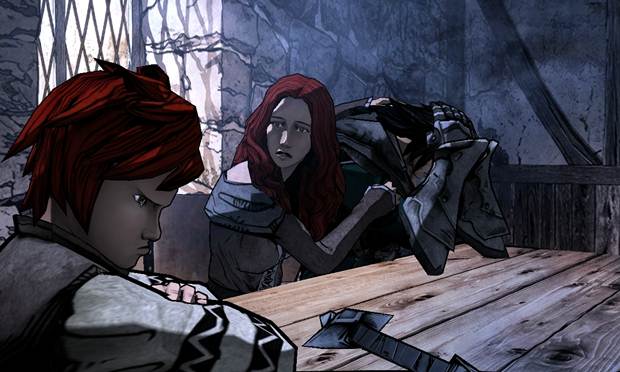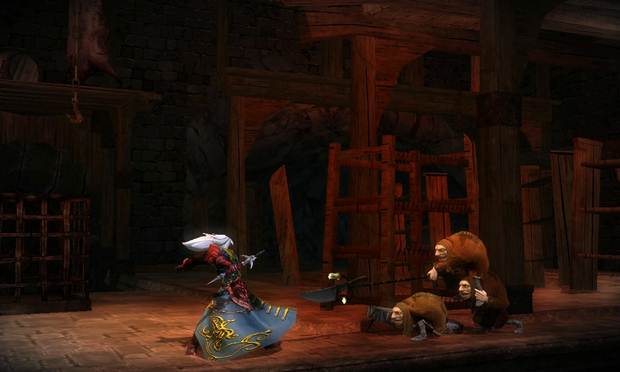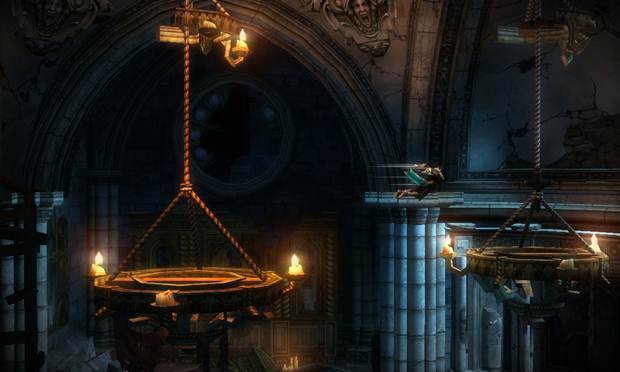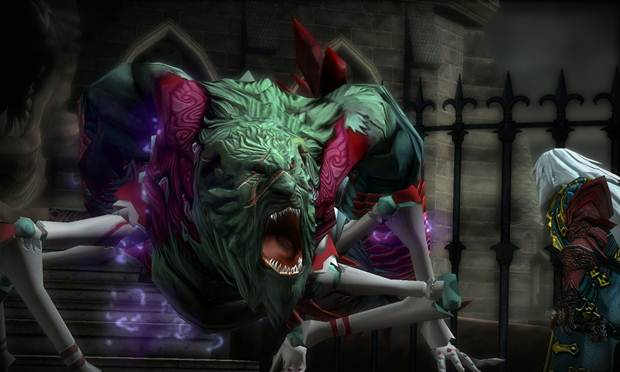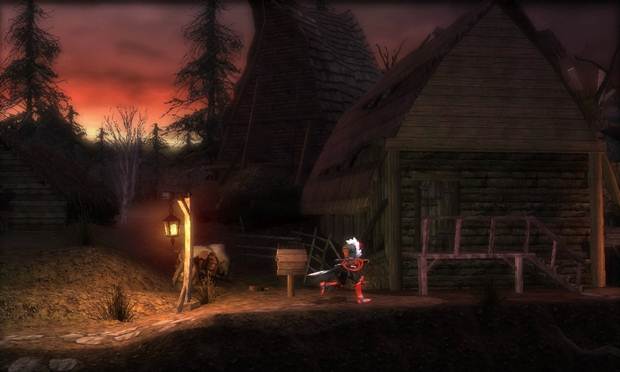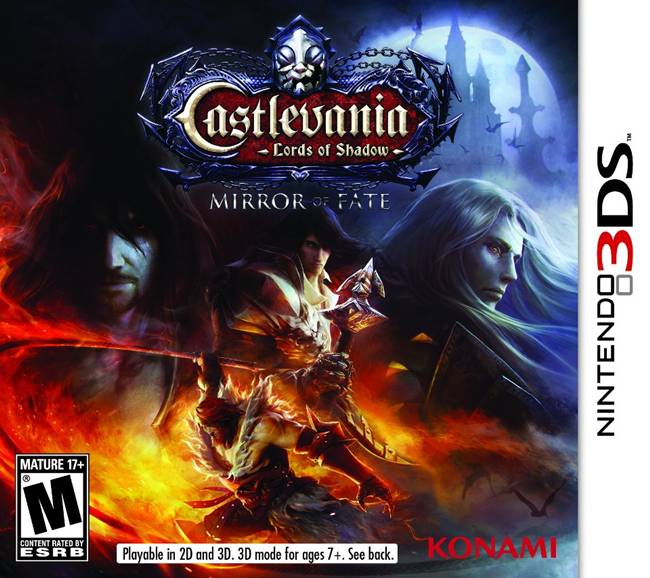
It’s doubtful that Bram Stoker understood the significance of what he had created when Dracula was first published in 1897. It’s easy to understand why; Dracula wasn’t the first work of vampire fiction. Several influential and famous works of the genre predate it, such as John Polidori’s The Vampyre and Sheridan Le Fanu’s Carmilla.
All of these works have endured in some way, especially Carmilla, but none of them have had a fraction of the impact that Stoker’s novel did. Dracula became the face of the genre, and the novel and its characters endure to this day, more than a century after the book’s initial publication; Dracula himself has gone on to become a permanent fixture in popular culture.
Since his initial appearance in 1897, the character has appeared in countless novels, television shows, films, comic books, and video games, each with its own take on the vampire king. While many games have made use of the character, Dracula is best known for his appearance in Konami’s Castlevania franchise. Like Dracula himself, Castlevania has a long and storied history. The series began in 1986 on the NES, and has since expanded considerably, as numerous sequels, spin-offs, re-releases and remakes all came to bear the Castlevania name.
"As the Castlevania series grew, it began to encounter many of the problems most long-running franchises do: the various entries in the series varied widely in quality, and as a whole, the series became more and more insular, preferring to iterate on the formula established by the genre-defining Symphony of the Night’s rather than look outside itself for new ideas."
As with even the vampire king himself, however, too much of a good thing can be a problem. As the Castlevania series grew, it began to encounter many of the problems most long-running franchises do: the various entries in the series varied widely in quality, and as a whole, the series became more and more insular, preferring to iterate on the formula established by the genre-defining Symphony of the Night’s rather than look outside itself for new ideas.
Many of the titles also built upon the same lore and storyline, and the more the series expanded, the more convoluted these elements became, and Konami was eventually forced to release an official timeline, both internally and to the market at large, so that people could keep track of the series’ increasingly complex chronology, and determine which games in the series were and were not considered a part of the official canon. By 2010, the Castlevania series was made up of nearly forty games and trying to get into the series as a new player was more than a little daunting.
Needless to say, it was time for a change.
Enter Castlevania: Lords of Shadow from Spanish developer MercurySteam. Lords of Shadow was the first 3D game in the series in five years, and featured a completely new take on the Castlevania mythos, one that was unconnected to the games that came before. The game was a critical and commercial success, and MercurySteam soon began work on a sequel, Lords of Shadow 2. In between, though, they did something rather unexpected: they made a 2D game known as Castlevania: Lords of Shadow – Mirror of Fate on the 3DS, which released to a mixed reception. However, MercurySteam wasn’t content to stop there, which leads us to Castlevania: Lords of Shadow –Mirror of Fate HD, a HD port for Xbox Live Arcade and the Playstation Network.
"Mirror of Fate tells a large part of its story through the environment, meaning proper cutscenes are few and far between. When they do appear, however, they are gorgeous cel-shaded affairs that are a joy to watch, and make the most of the game’s art style, which feature a sharp contrast between full, bright colors, and heavy dark lines."
Like its 3DS counterpart, Mirror of Fate HD takes place over the course of a sixty year period. This is split up into four acts in the game, each focusing on one of the game’s four protagonists: Gabriel Belmont, Simon Belmont, Alucard, and Trevor Belmont. The plot is told in a non-linear fashion as you follow each one of the characters through his journey: Gabriel seeks to imprison an ancient demon, Trevor hopes to destroy Dracula for the shame the monster has brought upon the Belmont name, Simon wants revenge against Dracula for the deaths of his parents, and Alucard wishes to kill Dracula for what the latter did to him.
The characters paths often intersect, and each one pulls back another layer on the onion that is Mirror of Fate’s narrative. One path might explain the origin of a certain boss the player fights in another, while another explain how a certain part of Dracula’s castle ends up the way it does at a later date. The story on display isn’t nearly as complex as the one in Lords of Shadow, and the plot twists are fairly obvious, but the Lords of Shadow series is still one of the best takes on Castlevania lore available, and special mention must be made of the game’s complex and menacing interpretation of Dracula.
Mirror of Fate tells a large part of its story through the environment, meaning proper cutscenes are few and far between. When they do appear, however, they are gorgeous cel-shaded affairs that are a joy to watch, and make the most of the game’s art style, which feature a sharp contrast between full, bright colors, and heavy dark lines. The scenes are fully-voiced and largely well-animated, written, and acted, though the character animations are noticeably smoother in some scenes than they are than others. It’s an incredibly appealing visual style, and one that is sued to great effect in the main game.
"Just as in the 3DS version, Mirror of Fate HD’s gameplay is largely a combination of the combat from Lords of Shadow, and the 2D platforming and puzzle solving found in previous Castlevania games. Combat takes place on a 2D plane, but utilizes the magic, combo, and block systems found in Lords of Shadow."
Environments are lovingly rendered in Mirror of Fate. Poisonous swamps bubble ominously underfoot, steam spurts from the pipes underneath Dracula’s castle, and old structures creek and shift under the weight of passing persons in a way that makes it hard to believe that this was once a handheld game. The real stars of the show, however, are the character models, which carry over the art style of the cutscenes to wonderful effect.
The animation on display here is top notch, and I would often stop to admire how good the characters look while performing various actions. The sound design is equally good. The voice actors bring a level of weight to their characters, and the soundtrack, while sparse, kicks in at just the right places and at just the right times. Still, it’s not perfect. Flaws and the odd bit of blurriness become more pronounced when the game zooms in for in-game cutscenes or special events, and it’s a shame the game doesn’t feature more music. These are minor complaints, however, and the game’s art style helps dull the severity of the former, which is good, since most of the time, you’ll need to focus on the game’s action.
Just as in the 3DS version, Mirror of Fate HD’s gameplay is largely a combination of the combat from Lords of Shadow, and the 2D platforming and puzzle solving found in previous Castlevania games. Combat takes place on a 2D plane, but utilizes the magic, combo, and block systems found in Lords of Shadow. Surprisingly, this works extremely well and the combat feels good. Even the basic combination attacks feel powerful, and fighting the game’s diverse cast of enemies is a genuine pleasure. Aside from the standard attacks provided by the ubiquitous combat cross, each character also gains two sub-weapons and magic spells, both of which are unique to that character, and MercurySteam has done a good job of making the characters feel similar, and yet distinct at the same time.
"The game also features a wide variety of enemies to test your skills against. Some are unique to certain characters, while others appear in every act, but require different tactics to bring down due to the different skills your characters posses."
Like Lords of Shadow, characters gain new abilities upon leveling up from killing monsters and finding secrets, and while you can go through the whole game by merely blocking, evading, and using simple combos, the game offers enough to make mastering the intricacies of the combat system worthwhile.
The game also features a wide variety of enemies to test your skills against. Some are unique to certain characters, while others appear in every act, but require different tactics to bring down due to the different skills your characters posses. Each act contains multiple boss fights, which are well-designed, unique, and make good use of the game’s 2D plane and combat systems, and I found myself wishing I could play some encounters more than once.
If combat is a carry-over from Lords of Shadow, then the platforming is classic Castlevania. You’ll guide your characters over chasms, underwater, and even through the air as you explore, and as in previous games, you’ll have to use all of your tricks to access all of the game’s areas and attain all of the collectibles and upgrades. Collectibles range from health and magic increases to the scrolls dropped by dead knights from Lords of Shadow, and vary in quality in Mirror of Fate just as much they did in their predecessor. Some might recount a genuinely chilling experience, while others range from the inane to the unintentionally hilarious. In a welcome move, the game allows you to put notes on the map, letting you to mark areas that you want to return to later should you lack the abilities to explore them now.
"Ultimately, Mirror of Fate continues MercurySteam’s success with the Castlevania brand. It’s a largely great 2D Castlevania game modeled in the image of Lords of Shadow that balances the series current direction and its legacy, and continues Lords of Shadow’s intriguing storyline while setting up the upcoming Lords of Shadow 2."
Thankfully, Mirror of Fate finds a good balance and combat, never allowing one to overwhelm the other. The game features frequent checkpoints in areas and even boss fights, which is a welcome addition, though these are disabled in higher difficulty levels. MercursySteam has also used the HD released to remove of many of the game’s Quick Time Events. While there were quite a few of these in the 3DS release, especially during the boss fights, the HD version has dispensed with them in all but a few key scenes. QTEs still show up, but when they do, they feel earned. The one downside to this is that some of the scenes remain unaltered. It will often be obvious where the QTE prompts were, as the game enters a brief, slow motion state during some scenes to allow the player time to input the QTEs that are no longer there. It’s a minor annoyance, but it can be jarring in the more dynamic scenes.
All told, Mirror of Fate offers quite a bit of content. It took me about twelve hours to clear the campaign after collecting all of the items and upgrades. Once you clear the story mode, you’ll unlock Boss Rush Mode, which allows you to fight all of the game’s bosses back to back and in order with a limited amount of health, items, and magic. The game came also be replayed on any difficulty, and will allow you to carry your upgrades over between settings, which means that even less skilled players can take on the dreaded Hardcore mode with enough practice.
Ultimately, Mirror of Fate continues MercurySteam’s success with the Castlevania brand. It’s a largely great 2D Castlevania game modeled in the image of Lords of Shadow that balances the series current direction and its legacy, and continues Lords of Shadow’s intriguing storyline while setting up the upcoming Lords of Shadow 2. Mirror of Fate HD may not appeal to diehard fans of Symphony of the Night, but it’s required reading for fans of Lords of Shadow. It won’t please everyone; games that reinvent popular franchises rarely do. But Castlevania hasn’t felt this focused in years, and for fans of the immortal character spawned by Stoker’s novel, and the legendary series he stars in, that is a good, good thing.
This game was reviewed on the Xbox 360.
Fantastic visuals and sound design. Combat is a great mix of 2D and 3D. Exploration is rewarding and fun. Characters feel distinct. Great boss fights. Intriguing storyline. Great portrayal of Dracula. Good amount of content for the price.
The occasional visual inconsistencies in gameplay and cutscenes. Some cutscenes still feel like they should have Quick Time Events. Limited soundtrack. Knight scrolls can be ridiculously silly.









